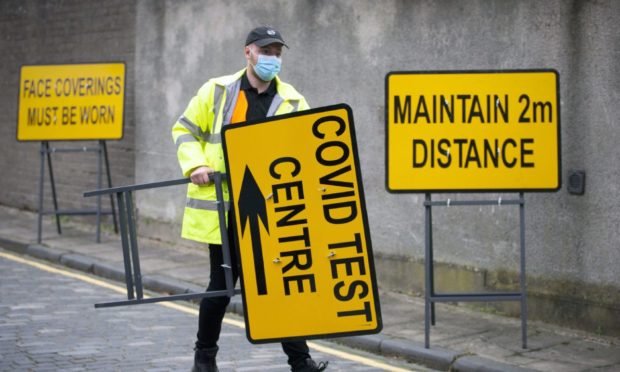Concerns have been raised about the potential rise of the Indian coronavirus variant in Scotland, with current estimates of around 20 to 30 cases.
Like the Kent strain which was responsible for the rise in cases over winter, the B.1.617 variant is thought to be more infectious.
There is some concern the so-called Indian coronavirus variant could be behind a recent rise in cases in Glasgow, with the city’s infection rate per 100,000 rising to over 70 in recent days.
UK Government scientists and advisers are reportedly set to meet to discuss the new variant and its presence here.
What do we know about the variant?
The World Health Organisation has classed the Indian variant as “one of concern”.
That’s because it’s thought to be either more transmissible, causing a more severe illness, or showing resistance to vaccines and antibodies.
Whilst scientists think the Indian variant is more transmissible, it is not currently known that it causes more severe illness or is resistant to the vaccines currently in use.
Cases in Scotland
Professor Jason Leitch told the BBC on Sunday that there were around 20 to 30 cases of the Indian variant in Scotland.
UK health secretary Matt Hancock described the variant as the “biggest threat” to the country’s lockdown easing plans, and it is hoped that it doesn’t spread further.
Scotland’s chief medical officer Dr Gregor Smith said more cases of the variant in Scotland was inevitable, but cautioned that just now there was no evidence of community spread.
He said the cases so far had been linked to recent travel.
Professor Linda Bauld, a public health expert, has said testing should be used to find out the prevalence of the variant in Scotland, particularly in Glasgow.
‘The test-and-protect response needs to be super robust’
She said this should include door-to-door testing: “I’m not going to speculate – genomic sequencing takes time, but there is a suggestion this variant may be even more transmissible than the Kent variant.
“If that’s the case then the test-and-protect response needs to be super robust and we need to identify where cases are.
“In other parts of the UK where we’ve seen these cases, surge testing is needed, that means not just asking people to turn up, it’s going door-to-door.
“Our attention needs to be focused on that and when cases are identified how do we give maximum support to communities to successfully self isolate and stop those chains of transmission?”
